#and the only XYY with those genes
Text
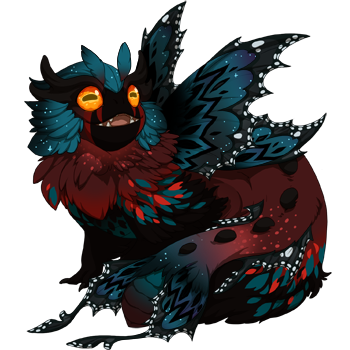

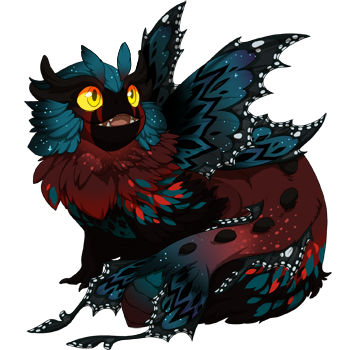
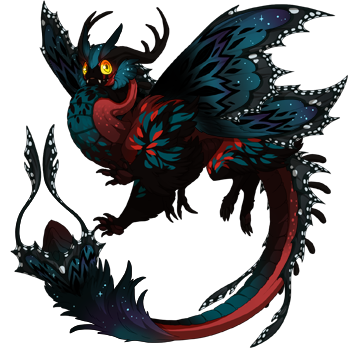
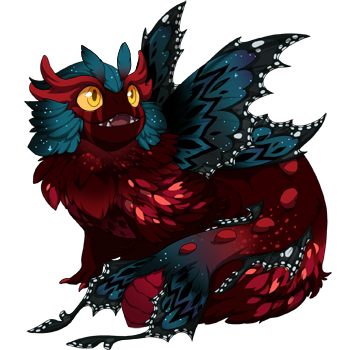
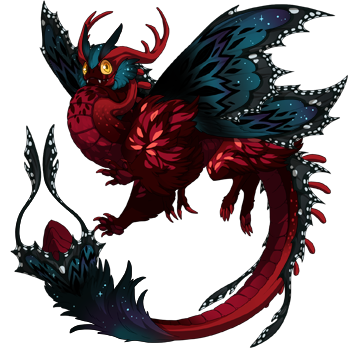
The boys are here and up for sale!
Two Blood/Obsidian/Obsidian, one Sanguine/Obsidian/Obsidian.
All thre are Cinder/Flair/Monarch
85288136 has the goat eyes and is up for 600g
85288137 has bright eyes and is also up for 600g
85288138 is the sanguine who is up for 500g on the AH
#fr aether#aether#fr ancient#fr cinder#fr flair#fr monarch#fr#flight rising#fr fire#fr goat eyes#dragons for sale#dragon share#gosh do i fucking love them#they are the only aethers in those colors on the ah#and the only XYY with those genes
45 notes
·
View notes
Text
My (Late) Take on the Hatchery Situation
The reason FR users seem to hold so much malice towards hatcheries isn’t that they specifically hate G2+ lairs, newer users, people whose don’t keep their dragons unbred, or the concept of breeding dragons and putting their kids on the AH. It’s because a vocal contingent of the userbase truly believes all dragons, with the exception of G1 imps or XXX/XXY G1s, should be sold for fodder price.
The logic goes like this: because a person who wants a dragon in general, any dragon will do, can usually pay less than 10kt on the AH and own one instantly, every dragon is worth fodder price unless it has something insanely special about it that justifies a higher price tag. “It’s pretty and it took me a long breeding project/expensive regening project to make the parents” isn’t a justification. “It’s an XYZ G1 but its colors compliment each other very well” isn’t a justification. Unless a dragon is the peak of prestige - and they don’t even really like that and will talk down on the owners of XXY, XYY, or XXX G1s who they feel price “too high” - it should be worth 10kt at most and chucked into the fodder bin.
It’s not that these people uniquely dislike hatchery owners. They dislike anyone who has a specific dragon and wants to get a non-fodder price for that dragon. Beautiful matchy XYZ from your hatchery whose colors compliment each other well and go with the established theme? Nope, there are thousands of XYZ spirals on site; yours isn’t special. Primal G1 whose eyes match its colors? Anyone can buy a primal vial, so that natural primal doesn’t add any value at all, not even a few measly gems - nevermind that the dragon being born already primal saves the future owner 500g should they want a primal G1. Even a nice XXY G1 should have its price shaved down a couple hundred gems every day it doesn’t sell, because really, you’re overestimating the amount that anyone wants it.
What these people resent, to be clear, is the idea of anyone making money off of selling any dragon. They believe dragons are a drop in a bucket, the AH is a buyer’s market, and you should act like you know you’re indebted to the buyers by making everything you sell as cheap for them as you can manage. If you don’t do that, you’re not just bad at business; you’re entitled.
I strongly disagree with that logic, to be clear, and here’s why.
If you want a dragon, just any dragon, the colors and genes don’t matter one bit, then yes, you can easily pick one up for a mere handful of gems at any time from anyone. This is why the fodder floor is the fodder floor in the first place (as opposed to the perma floor) - the people for whom any dragon will do are usually exalters. When it comes to fodder, then, FR truly is a buyer’s market. There are so many fodder dragons available that no one has to buy yours unless you match the lowest price, so you better get matching.
But people buying permas usually want at least some specific criteria met, whether that’s a favored color scheme, favorite genes, eyes that match, etc. Sometimes those specifications - collecting pink snappers! - are so broad you might easily find too many dragons to fit your lair at the fodder floor. But sometimes they’re more specific. Sometimes there may only be a few G1s of the colors you want on site, or there may only be one person actively breeding dragons in the color scheme you need for your project. In these situations, the scale tips more towards the sellers - often not entirely, not to the point where they could charge anything, but they get more sway, because they now have something specific that buyers need., and the buyers can’t just find someone else to name a better price
If I’m truly the only person breeding XXYs of a specific color on the whole site, I can set whatever price I want. Now, I should be reasonable - nobody will spend thousands of gems for a G2+, and unless the combination is particularly stunning and popular, anything past 100g is pushing it. But if I decide I believe my hatchlings are worth 50g, then prospective buyers must pay 50g or they’ll have to breed an identical dragon themselves, often costing themselves more in the process. And just like “I could buy fodder for 6kt right now, so I won’t pay 10kt for yours” is a completely fair take and a natural consequence of the way the FR economy is set up, “I’m opening a hatchery and I’m charging 100kt a pop for these rare imps and anybody who wants them will have to accept my price” is completely fair and in line with the natural give and take of FR’s economy.
This gets people heated, because they think they should be able to waltz into anyone’s sales tab and buy any dragon in there for pennies. But anyone who thinks about the economy for ten seconds realizes it won’t work this way every time, and it isn’t logical to expect it to.
FYI: There is an equivalent of this phenomenon that happens with just about any selling of in-game goods (I’m not talking about art, stop forcing the art discourse, all of you!) for more than table scraps. There are people who hate coli grinding that get angry that players who put the time and effort into grinding in the harder venues won’t sell hibden task familiars for cheap, for example. People who get angry that the owners of retired items raise their prices over time to reflect their increasing rarity. A lot of players have a perhaps subconscious but nonetheless very nasty “Money for me, not for thee” mentality. “I should be able to charge what I want for the game assets I own, but you should make it easy for me to buy yours.”
28 notes
·
View notes
Text
I keep seeing this term ‘biological male’ being thrown around. There are lots of reasons why this is an innacurate and unhelpful description, but I’d like to examin just this term for a moment.
What exactly is a ‘biological male?’ The definition of biology is “the physiology, behavior, and other qualities of a particular organism or class of organisms.“ So let’s brake that down a bit. In refference to humans that means organ structures and chemicals that run those organs. So when talking about biological sexes, we’re probably referencing a certain set of average characteristics shared by people with XX chromosomes, XY chromosomes, or other sets of chromosomes which are part of natural human variation like XXY, XYY, XXX, XXXXY, X, XXXXXX, and XXXY (learned about those in biology class. It’s really cool how much more diversity there is to human biology than you generally think about. If we’re basing sex off of DNA, there are indeed WAY more than two sexes).
Now the way that any of those sets of DNA (which are known as genotypes) translate to how the body looks and works (phenotypes), is by making chemicals. Those chemicals are what build all the organs and keep them running the way they do. DNA isn’t the only thing deciding how much of each chemical there is though. Environmental factors like the food we eat, medicine we take, other organisms living inside us like bacteria and viruses, chemicals we absorb from the environment, and even stress massively impact body chemistry, often completely overriding DNA. So sometimes you might have the genotype for one thing and end up with a different phenotype. Like people who were born with tall genes but end up short as adults because during the time they were developing they didn’t have access to adequate nutrition. Their DNA might say one thing but in reality, they turned out as something else. The short person with tall genes is still short, regardless of what their DNA says.
Phenotype can also be directly changed by outside forces, like getting a limb blown off in an explosion, getting your ears pierced, or having surgery. These overide both DNA and body chemistry. A person with the DNA and chemicals to have two arms but had one arm chopped off is phenotypically a one armed person.
When reffering to different sexes, we’re usually talking about generalized groupings of phenotype, like gential organs, bone structure, musculature, hair growth, and fat distribution. These phenotypes are generally determined by chemicals called hormones. Just like any other chemicals, these too are impacted by environmental factors like what we eat and what medicines we take. So when someone takes a medicine that alters their hormone levels, that alters their phenotype. Just like how growing up with healthy foods and vitamins can help kids develop strong and healthy bodies, medicines like puberty blockers and hormone replacement therapy lead to bodies developing differently. These phenotypes can of course also be altered through surgery by deconstructing and reconstructing different parts of the body like genitalia and facial bone structure. By changing the chemicals and organ structures they have changed the biology.
So what is a ‘biological male?’ A biological male would presumably be someone with the general phenotypes of the group called males. If someone does not have those phenotypes, it wouldn’t make sense to call them a biological male. So according to the definition of biology, a trans woman whose physiology, behavior, and other qualities align with those exhibited by females is not a biological male. She is a biological female.
#I wrote this up in a response to a video my dad sent me from a right wing news station#wailing about the horrors of ‘biological males’ in women’s sports#it is by no means meant to be a complete analysis of that issue#or a thesis on why trans women are women#women and females are not the same thing#I am also not a biologist#I’m just a dude who took biology in school like everyone else#which is why I’m fairly confused about why so many people do not seem to have a grasp of basic biology#and keep on trying to use it to argue things it does not say#biological male#biological female#biological sex#biology#basic science#human biology#trans women#trans women in sports#trans women are real women#transexual#transexual women
2 notes
·
View notes
Text
Kind of tailing off of a post I just reblogged but there’s an older med or crime drama mom and I used to watch that still has me reeling with some trauma. Tw for rape and transphobia here forth.
One of the lead characters forces himself on a woman, realizes she’s trans when he forcefully penetrates her, then goes storming off to his colleague that she “isn’t a real woman” and that was what was treated as the bad thing. Not that he raped her but that her vaginal canal was “too short” and thus she wasn’t a “real woman.”
Like. The scene still creeps itself into my mind and I feel sick. Not only because it’s just blatantly fucked up, but it’s also straight up inaccurate.
Cis women, AFABs and trans women (who desire-and-have had a vaginoplasty performed) all have varying lengths of vaginal canal. Mine is fairly deep, while some women/AFABs have very shallow canals. They make tools that help in penetrative sex for those who have short canals.
Idk. I could rant a lot about how the notions every vagina is the same and every penis too. Bodies vary so drastically. Biological sex is also such a variable, fluid aspect of humans it’s literally heartbreaking to me how much society fights against the notion of trans and intersex individuals. On a physical scale not a single one of us has 100% female or 100% male traits because that isn’t how bodies work. Chromosomes are barely relevant past utero, and hormones play such a drastically more important role in sex characteristics that chromosomes ever do. Chromosomes are like the pitch, genes are the blueprints, hormones are the actual labor that creates the product and that product can be changed. There’s many cis women with an XY pairing who’s SRY gene didn’t activate or never attached. There’s cis men with an XX pairing that had an SRY gene attach to an X chromosome. There’s those of us with XXY and XXX and XYY and so on. There’s intersex individuals with XY or XX and just happen to have had hormone levels that fluctuated the right way to give them mosaicism or in my case androgyny. There are cismen with feminine voices, and ciswomen with dark facial hair and adams apples, there are girls with boxy shoulders and narrow hips, and boys with hourglass curves and thick thighs. There are hundreds of skeletons we’ve mis-identified as f/m because archaeologists made assumptions and turns out the couple was in fact two men. There are more we just can’t identify because their bone structure, something our endocrine system helps dictate during developmental stages, are not strictly what we can tell to be “male” or “female.”
Humans don’t fit in neat boxes. Nature doesn’t fit in neat boxes.
Im very tired. I hate knowing things.
1 note
·
View note
Text




It's been a little while since Notn, and I've carefully considered whether or not I would like to gene this lovely gen one i hatched amidst all the mayhem, and the answer is basically no, because i wont be coming into money until like..april? So i figured this gal would be better off with someone who actually has the coins to gene her lol
I'm looking for 3000g since she is very closely a xyy (Antique/dust/smoke so only one colour off) and just generally pretty colours!
She's listed for that amount right here!
(I can hold her for those who want, mixed payments okay at a 1:1000 rate!)
#fr#flight rising#fr dragon share#fr dragon sales#fr gen one#flight rising dragon sales#fr gen one sales
35 notes
·
View notes
Text
Intersex




Intersex is a term for those born with physical sex characteristics that cannot be traditionally classified as male or female. Variations may appear in a person’s chromosomes, natural hormones, genitalia, gonads, secondary sex characteristics, or some combination of these things. Intersex variations are observed in many animals including humans. According to the ISNA it is estimated that as many as 1.7% of people are born with intersex traits, however this may be an incorrect estimate, as many individuals are unknowingly intersex due to the fact that external genitalia is the only sex characteristic noticed at birth (in most cases).
Intersex does not describe a specific body type but rather is an umbrella term for a broad range of variations/traits. Some intersex individuals may closely resemble one of the binary sexes, while others are closer to in between. An intersex person may have characteristics of both the male and female sexes, characteristics that fall somewhere in between male or female, or characteristics that don't fall into either.
Intersex individuals may have any gender identity, including male, female, and non-binary. They may identify as cisgender or transgender, or possibly another gender modality such as ipsogender or ultergender. Intersex people can have any assigned gender at birth, some may be AMAB or AFAB because their variation of intersex was not noticed at birth. Others may be corrosively assigned male/female at birth (CAMAB/CAFAB), meaning they had nonconsensual surgery preformed on them so their body more closely fits one of the binary sexes. In some rare cases they are AXAB. Each intersex person has a unique relationship to their gender, assigned gender at birth, the gender they were raised as, and how that relates to their experience being intersex. Intersex is included in the LGBT+ community, though not all intersex people consider themself to be LGBT+ on the basis on being intersex. This is largely a personal choice based on how one's status as intersex has (or hasn't) affected their experiences.
Someone who is not intersex is called dyadic or perisex. Intersex is not an identity, but is something one is born as. Some intersex traits are identified at birth, while others may not be discovered until puberty or later in life (although, the variation was always present, just unnoticed). One cannot "transition to intersex". Dyadic people who desire mixed sex traits may identify as altersex.
Intersex Spectrum
Chromosomal Variations
45,X/46,XY Mosaicism
49,XXXXY Syndrome
De La Chapelle Syndrome
Klinefelter Syndrome
Pentasomy X
SERKAL Syndrome
Tetrasomy X
Triple X Syndrome
Turner Syndrome
XYY Syndrome
XYYY Syndrome
XYYYY Syndrome
XXYYY Syndrome
XXXYY Syndrome
XXYY Syndrome
XXXY Syndrome
Hormonal Variations
Aromatase Excess Syndrome
Aromatase Deficiency
Androgen insensitivity syndrome
Cytochrome PORD
Estrogen insensitivity syndrome
FMPP
Hyperandrogenism
Hyperestrogenism
Hypogonadism
Leydig Cell Hypoplasia
PPSH
Gonadal/Reproductive System Variations
Gonadal agenesis
Gonadal dysgenesis
Hypergonadism
Müllerian Agenesis
Ovotesticular
PMDS
Polyorchidism
Uterus didelphys
Genital Variations
Agenital
Ambiguous Genitalia
Clitoromegaly
Diphallia
Hypospadias
Macrogenital
Penoscrotal Transposition
Gene-Related Variations
17-KSR Deficiency
Ablepharon Macrostomia Syndrome
Barber Say Syndrome
Campomelic Dysplasia
Denys-Drash Syndrome
H Syndrome
Kallman Syndrome
MDP Syndrome
SCARF Syndrome
WNT4 Deficiency
Gland-Related Variations
17-AH Deficiency
Congenital Adrenal Hyperplasia
Intersex-relating syndromes/traits
Aarskog-Scott Syndrome
ATR-16 Syndrome
Bermitra Cryptorchidism
CHARGE Syndrome
Chromosome 18 Ring
Duplikasi Cryptorchidism
Menghapus Cryptorchidism
Mutasi Cryptorchidism
Opitz G/BBB Syndrome
Poland Syndrome
Polycystic Ovary Syndrome
Prader–Willi Syndrome
Seaver Cassidy Syndrome
Secondary Sex Agenesis
Human Chimerism
The most commonly used intersex flag was created by Morgan Carpenter. An earlier flag design was made by Natalie Phox.
88 notes
·
View notes
Text
Okay, so I’m back on flight rising after like. Years. Last time I was on was maybe 2016?
So for the love of god someone help me. What are ancient versus modern breeds now? Can you not breed them together? Why? Also, what are the sought after color combinations and such? When I left, it used to be XYY. Like rose/rose/Maize. Are there any sought after tertiary marks? I know that when I left, people put a lot of value on dragons that were unique, ones that might be the only one, or only the second or third one, with those colors in that specific order or with those genes. Is this still true?
I haven’t even touched the Colosseum out of fear yet, so I’ll cross that bridge when I get to it
Basically, I have a lot of old dragons with old genes and low numbers, and I want to replace some of them with the newer ones, but I don’t know if people might want to buy my old dragons just because they’re old. I also have no idea what to replace them with
6 notes
·
View notes
Text
TAFAKKUR: Part 185
Recurring DNA in Genome Structure: Part 2
Sequences encoding different information in DNA
Different information types corresponding with various DNA sequences exist in the genome. These DNA sequences that were considered junk for a long time because they were not coding proteins, have in fact been found to be responsible for an amazing array of functions in genomic structure. Some of these sequences include:
Group determining sequences that enable coordinated or successive expression of genes,
Sequences acting as a marker in charge of initiation and termination during transcription of DNA to RNA ,
Signal sequences responsible for conversion of primary immature RNA, sequences into smaller functional RNA molecules,
Transcription control sequences that determine the expression frequency of genes,
Sequences that identify and mark the initiation regions for intensification and remodeling of chromatins,
Sequences that make binding regions which affect the relocation of genome in nucleus or nucleolus,
Sequences that target regions where covalent DNA modification (methylation) with functional groups like methyl takes place,
Sequences that control and identify the regions responsible for initiation of DNA replication,
Sequences that make the structures which enable completion of replication at terminal ends,
Sequences at the segregation points that enable equal distribution of copied DNA molecules into daughter cells and centromere sequences,
Sequences responsible for guidance during repair of DNA bound errors and damages,
Start point sequences used for repackaging of genomes,
Recurring sequences exist in the genomes of many organisms and shows great structural diversity. Recurring elements function as an initiator or terminator for heterochromatin regions. Furthermore they form an important scaffold and binding spots for folding of DNA structure. As if they carry out the job of an architectural mold in specific shaping of genome to be packed into a very limited area. The ratio of repeating sequences in genome (60-90%) is much more than sequences that are encoding proteins and RNA (10-40%). To explain it with an example, chromosomes in human genome are made up of packages of protein-DNA such as heterochromatin and euchromatin. Heterochromatin regions usually make up the regions with no transcription whereas euchromatin regions feature DNA transcription.
The ratio of protein encoding sequences to the entire human DNA is approximately 1.2%. Around 43% of euchromatin regions are composed of recurring and mobile DNA elements. 18% of heterochromatin region is also made of satellite (dense repeating sequences) and mobile DNA elements. Therefore almost 50% of human genomic DNA is composed of these repeating DNA sequences. In bacteria however, these only make up around 5-10% of the genome. These sequences were described as parasitic and junk individual DNA structures up until today and still continues to be described thus by many researchers and scientist. Nevertheless, even today, mobile DNA elements and repeating sequences are accepted as genomic parasites. Recent advances in the last ten years that have demonstrated this is not true, have instead revealed the vital importance of repeating sequences in genomic functions.
Repeating DNA sequences affect chromatin (dense pack of DNA and protein) structure in two ways. Irregular repeating DNA sequence copies contain binding regions for proteins that organize DNA. Heterochromatin (darker since it is densely packed chromatin) inhibits transcription and recombination, delays replication, and generally blocks the reading of information in DNA sequences that contain genetic coding. Heterochromatin regions are distributed throughout the chromosome. Because of this, presence of regions with coupled successive repeated sequences triggers heterochromatin formation.
In fruit flies, placement of protein encoding loci required for eye pigmentation near the heterochromatin blocks in centromeres (phenomenon of position effect) is provided via organization of chromosomes and thus, formation of phenotypic characters are inhibited. The “phenomenon of position effect” is convincing evidence that genome is a major system which is integrated with composition of partially repeating DNA sequences. When heterochromatin amount is increased in XYY male fruit flies, reorganized pigmentation of eye expression decreases. In XO males, when heterochromatin amount decreases, inhibition becomes severe. Changes in levels of protein which binds to special heterochromatin specific DNA regions generate opposite effects. Decrease in these proteins reduces or suppresses “phenomenon of position effect.” Surplus synthesis of these proteins also enriches this effect.
Repeating DNA sequences play an important role in the transfer of genome into daughter cells. For instance, they function in formation of the centromeres as chromosomal binding regions for microtubules, during gamete formation as linear terminals of chromosomes are replicated, and during chromosomal matching. Distribution of repeating sequences plays a major role in configuration of genomic functions. Each genome has genomic system structure that is shaped dependent on the amount of repeating DNA sequences to a major extent.
Going back to Nursi’s explanation of the Manifest Record, we can draw a parallelism between the book of the universe and the book of revelation, the first of which shows us that certain sequences in the genome are repeated for significance and necessity, just as many verses are repeated frequently in the Qur’an with nuances to refer to different meanings, benefits, and purposes, opening a wider space for many interpretations.
A genome is not only a book that contains protein and RNA codes, but also has a complex system structure with many functions for cellular vitality. The most needed sequences are those that are repeated more frequently. They are not pieces of junk DNA as predicted, they are jewels Divinely constructed.
#allah#god#prophet#Muhammad#quran#ayah#sunnah#hadith#islam#muslim#muslimah#revert#convert#help#hijab#religion#reminder#dua#salah#pray#prayer#welcome to islam#how to convert to islam#new convert#new revert#new muslim#revert help#convert help#islam help#muslim help
2 notes
·
View notes
Text
Take the Red Pill: The Truth Behind the Biology of Sex by Luz Delfondo
this article was deleted, so I’m re-posting it here so I can add it to my intersex carrd and weebly.
This is the first part of a series about the complex biological realities of sex. Though the posts build on one another, each can be understood alone. Content note: this post contains images and language that may not be safe for work. 1. Introduction
I first learned about the social construction of sex from a lovely trans woman named Kiki.
She said, “You may have heard before that gender is socially constructed, while sex is biological. But I’m here to tell you that what you’ve heard isn’t true. Sex is socially constructed too. So are you ready for the truth? Are you going to take the red pill or the blue pill?”
Three years later, I was diagnosed by my gynecologist with polycystic ovarian syndrome (PCOS), which means that my body produces hormones intermediate between “typical men” and “typical women.” What I learned from Kiki gave me context in which to understand what this meant about my body and who I am. But it’s still very hard for me to talk about. My hormones affect me in ways that are hard to see, so even most of my lovers don’t know. I can count the number of people in my personal life who know this about me on my two hands.
I picked the red pill. If you read on, you can take the red pill too.
The problem with calling sex “biological” is that biology is complicated. Hardly anything in biology fits into two neat categories like “male” and “female.” To give you an idea of how complicated sexual development really is, let’s go to the very beginning. How do sexual characteristics develop in a human embryo? 2. The Biology A. Development of the Internal Genitalia In the sixth week of an embryo’s development, a piece of primordial tissue called the pronephros splits off into a baby kidney and a baby internal reproductive system. This system consists of three parts. There’s the Müllerian ducts, which can develop into fallopian tubes, a uterus, and a vagina. There’s the Wolffian ducts, which can develop into a seminal vesicle, vas deferens, and epididymis. Then there’s the gonads, which can develop into ovaries or testes. At this stage the gonads are called indifferent, which I find kind of hilarious, because I imagine the gonads just chilling inside the embryo going, “Yeah, whatever, I just don’t care about sex differences.”

So what determines what happens to all of these parts? It’s complicated. Very complicated. But I’ll try to cover the highlights.
The embryo doesn’t start to differentiate into male/female traits until 7 weeks in. What determines whether the gonads become testes or ovaries is the presence of a gene called SRY, which is typically found on the Y chromosome (though as with everything in biology, there are exceptions: SRY sometimes wanders off to another chromosome, which means you can have a person with XX chromosomes and testes).

Not everyone has XX or XY chromosomes. Some people have XXY or XYY or XXX or just X. But if the embryo has a Y chromosome, the SRY gene will nudge the indifferent gonads toward becoming testes. This means that even if you have testes, you might not be XY in your chromosomes.
The SRY gene causes some cells in the gonads to begin commitment to sperm development, and to pump out two hormones: the famous testosterone, and the less-known anti- Müllerian hormone, which usually (but not always) causes the Müllerian ducts to break down. (If they don’t break down, the fetus will be born with testes, a uterus, and Fallopian tubes.)
The Wolffian ducts usually develop instead, into the organs that create the non-sperm components of semen and deliver them to the testes. (If they do not develop, this results in an individual with testes who does not ejaculate and is infertile, because the sperm don’t have a nice semen package in which to leave the body.)
In the absence of SRY, some genes on the X chromosome, such as DAX-1 and Wnt-4, kick in. The cells in the gonads commit to egg development. Hormones secreted by the ovaries usually cause the Wolffian ducts to degrade, though sometimes there are remnants. If you have bumps on the sides of your vagina, they may be remnants of the Wolffian ducts you had as an embryo.
The Müllerian ducts usually develop into a uterus, Fallopian tubes, and a vagina, though how much of the vagina comes from the Müllerian ducts is controversial. Don’t you love that there’s a big scientific controversy about vaginas? Scientists aren’t sure whether the entire vagina comes from the Müllerian ducts, or just the upper vagina.
Now, in some cases, the gonads get mixed signals and become intermediate between ovaries and testes, and may be able to produce both eggs and sperm. If that happens, the hormones produced by each part interfere with the other, and the typical result is infertility or only one type of gonad fully functioning. The Wolffian and Müllerian ducts may both develop, one to a side, or just one or the other might develop, or neither.
B. Development of External Genitalia Meanwhile, on the outside of the embryo, between its tiny growing legs, is a structure that looks like this:

The development of the external genitalia happens later, in weeks 9 through 12 of development. A complex interaction of hormones determines how the external genitalia develop, which means that there are many possible outcomes of genital development. I’ll try to cover as many possibilities as I can. I will refer to the image above as well as the image below, called the Prader scale, which shows some of the different ways the external genitalia can develop.

Part 1 is the sensitive head of what anatomy textbooks call the “genital tubercle” but I prefer to call the “phalloclitoris,” because as we will see, the penis and the clitoris are so similar that in this story (and maybe in general) it doesn’t really make sense to call them different things. The development of the head of the phalloclitoris is mostly the same in everyone. Testosterone causes it to get larger, but it has just as many nerve endings no matter how big or small it ends up.
Part 2 is a membrane that gives rise to the urethra and the anus in everyone, and to a vagina in some. The first thing that happens to structure 2, in everyone, is that the bottom part pinches off into an anus. What remains is called the urogenital sinus. In some individuals, the story ends there. They have one opening, from which they pee, but also has erotic nerve endings and produces lubricant (though it is often shallower than a vagina; see stage 3 in the Prader scale.) In some individuals, it pinches off into a urethra and a vagina. In the remaining group, it closes up like a zipper into just a urethra. If these individuals have a penis, the urethra usually lengthens up to the tip (but it might not migrate all the way up; see stage 4 in the Prader scale).
Part 3, in everyone, forms the body of the phalloclitoris. Now, here’s where things can get hard to explain, because sex education in this country is woefully inadequate. It is obvious to most everyone what the body of the penis looks like: it’s the shaft, everything that isn’t the head. But not everyone is aware that the clitoris has a body too, not just a head. In most individuals who have a clitoris, only the head is externally visible. But the body of the clitoris is just as long as the body of the penis. It looks like this:
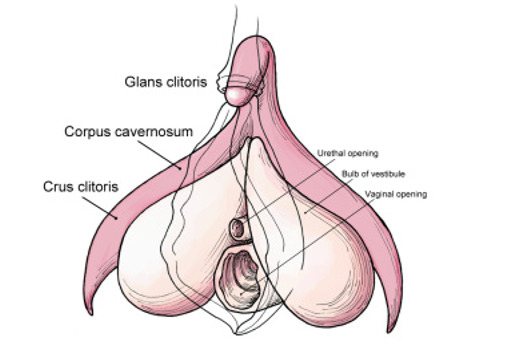
Those four balloon-like things around the vagina are the body of the clitoris. A penis is just like this, just external and sewn up along the bottom edge. Except, of course, not always:
[Image Missing]
some people are born with an external phalloclitoris that opens up along the bottom, like the clitoris in the image above. This all comes from structure 3 in the picture. Structure 3 can also develop labia minora. Anyone who has been sexy-intimate with labia minora, their own or someone else’s, won’t be surprised by this: both the body of the phalloclitoris and the labia minora feel very good when stimulated.
Part 4 can swell into labia majora, or fuse together along the bottom edge into a scrotum. Or something in between can happen: labia majora that form “pouches” like a scrotum, or a scrotum that doesn’t completely seal up along the middle. See the Prader scale image for some of the different ways Part 4 can develop.
That’s it for the external genitalia. The last part of sexual development happens around week 26: the descent of the gonads. You may have heard about the descent of the testes. If a fetus with testes has a scrotum, most of the time, the testes will descend into it before birth. If the fetus has testes but no scrotum, or the signal to descend never reaches the testes, they will remain in the abdomen undescended, possibly for the rest of the person’s life, possibly not. What you may not know is that the ovaries (usually) descend too. When the ovaries descend, they attach to the ends of the Fallopian tubes.
3. The Implications Those are the biological facts of sexual development. It should be clear to you now that the outcomes of sexual development don’t fall into two obvious categories of male and female. One implication that jumps out at me is that while we don’t know how a sense of gender identity develops in the brain, because there are so many possible outcomes of sexual development in the genitalia, it wouldn’t surprise me at all if we find that there are many possible outcomes of sexual development in the brain. The likelihood of someone growing up to have a penis and a strong sense of female identity is at least as high as someone growing up to have a beard and a vagina, or testes and a uterus.
Another implication is that “biological sex,” in reality, is a spectrum, or maybe even more complicated than a spectrum. However, societies divide this spectrum into socially constructed categories: sexes.
So where do we draw the dividing line? This may seem arbitrary to you, and it absolutely is. Not all societies have divided up this spectrum the same way. For example, in India, some people with genitals in between the typical male and typical female are classified as a third sex, hijra. Where does Western society draw the line? Until the 2000s, the standard was basically this: is the location of the urethra in right place, and the size of the phalloclitoris big enough, that the baby can eventually stand to pee, and be able to insert the phalloclitoris into a vagina?
Even if you are not a regular reader of this blog, the ideology of sex and gender behind this dividing line should be clear. For decades, the medical marker of maleness was a penis that fit the standards of masculinity: standing to pee, and having heterosexual intercourse. These standards had serious consequences. Any baby with a phalloclitoris that didn’t meet medical standards was subjected to unnecessary surgery to reduce the phalloclitoris to an “acceptable” size for a clitoris, raised as female, and kept in the dark for the rest of their life about the genitalia they were born with. These days, the standard used for assigning sex to intersex babies is chromosomal sex. XX, you’re female, XY, you’re male.
But there’s more. While some babies are born with genitalia ambiguous enough for parents and doctors to get into a kerfuffle, there are many intersex conditions that have nothing to do with external genitalia and may go undetected. For example, there are those individuals with XX chromosomes and a wandering SRY gene attached to their genomes somewhere. Those people may manifest, in their gonads, internal genitalia, and external genitalia, as typical males. But until they get karyotyped and have a look at their chromosomes, they may never know they are intersex. There are also conditions that cause male-assigned people to produce high amounts of estrogen and related sex hormones or female-assigned people to produce testosterone and related sex hormones. The effects of these sex hormones are sometimes highly noticeable, but sometimes they are harder to detect.
This means that even if you don’t think you are intersex, you could be. I know because it happened to me.
When I was 18, I was diagnosed with PCOS, polycystic ovarian syndrome. This happens when the ovaries produce unusually high levels of androgens (male sex hormones). PCOS is not classified by the medical community as an intersex condition. However, what the medical community designates as “intersex” or not is motivated by politics, not biological facts. The goal of the way variation in sexual development is defined is to label as few people “intersex” as possible, so they don’t have to live with the “shame” of the diagnosis. The only conditions that are called intersex are ones that can’t be explained away to a child’s parents as a “slight genital abnormality.” Thus, doctors are able to claim that only 1 in 1500 babies is born intersex.
A much more pragmatic definition of intersex, as proposed by Dr. Cary Costello at the University of Wisconsin-Milwaukee, is when a body does not fully differentiate into male or female. By that definition, people with PCOS are intersex, because the condition we were born with makes our androgen levels higher than most women’s and lower than most men’s. Our androgen levels also reduce the levels of female sex hormones in our bodies so that they are intermediate between the typical levels for men and women. Our bodies are not fully hormonally differentiated between male and female. It is thought that up to 5% of female-assigned people may have PCOS. That would mean that at least 1 in 40 people are intersex. The medical community, and society at large, is not ready to accept that figure. If 1 in 40 people don’t fit into our boxes of “biological sex,” then there’s no way to deny that our boxes don’t do a very good job of classifying people. Many people would find that frightening. I don’t find it frightening. I find it delightful. I am so happy that there is so much sexual diversity in the world, and that biology is too complex and beautiful to jam into two little boxes. When I was diagnosed with PCOS, I wasn’t horrified or scared. I was relieved. Finally, I had an explanation for why my body never followed anything resembling a regular menstrual cycle. I knew why my sex drive would suddenly, drastically change: my hormones were shifting from a female sex hormone-dominated bouquet to a male sex hormone-dominated one, or vice versa.
When I was diagnosed with PCOS, my gynecologist offered me the option of hormone therapy to make my hormonal profile less androgenic and more typically female. Since I was an adult, I could choose whether to take that option or not. I tried it out for a few months, and I hated it. It changed me in a thousand subtle ways that added up to a profound alienation from my own body. I didn’t feel like myself anymore. So I stopped the hormone therapy and went back to my intermediate, intersex state.
Children who are diagnosed with intersex conditions usually don’t get that choice. Their genitals may be operated on, resulting in permanent loss of sexual function. They may be given hormones for years to feminize or masculinize them, causing some of them to go through a partial puberty at age four. The choice of which sex to assign them to, as I explained above, is utterly arbitrary. Many more intersex children end up identifying as transgender than in the general population, knowing that they were born with the very genitalia that they desperately wish hadn’t been taken from them with a surgeon’s knife.
The entry for Androgen Insensitivity Syndrome, an intersex syndrome that results in intermediate genitalia, on Medscape has this to say about how to treat children with this condition: “The ultimate medical goal of treatment is to restore external genitalia as close to a nonambiguous appearance as possible while retaining full sensation, the ability for sexual satisfaction (to include penetrative intercourse), and, ideally, fertility.”
Maybe some people with Androgen Insensitivity Syndrome want to be nonambiguous. Maybe they want to have penetrative intercourse. But when they’re babies, you can’t possibly know. I remember how miserable I was on the hormone therapy that made me “typically female.” I can’t imagine what it would have been like if I’d been forced to be on them all my life. No one should ever have to go through that. Nonconsensual, unnecessary surgery is morally wrong, and I extend my deepest sympathies to all intersex people who have been violated that way. You hear all kinds of stories about “biological sex.” At the Olympics, they determine the sex of athletes by measuring their testosterone, because supposedly testosterone is what gives male athletes an advantage over female athletes. You also see scientific studies about how testosterone makes men more aggressive than women, more sexual, better-adapted to be hunters back when they were cavemen. If these stories are true, then I have the advantages of a male athlete. I am aggressive, sexual. I am a caveman hunter. If the way men and women behave is an inevitable consequence of biology, then where do I, and other intersex people, fit in?
We don’t. Because the stories aren’t about us. They aren’t about biology, which is messy and complicated. They’re fables. They’re folk tales we tell each other so we’ll keep believing in the great patriarchal fantasy that there are two sexes that are completely different from each other, and that one is better than the other. Because biology. Well, I’m a person too. So are other intersex people. So are non-intersex people who don’t fit into the patriarchal narrative of how we’re supposed to live. And this is our story.
2 notes
·
View notes
Photo
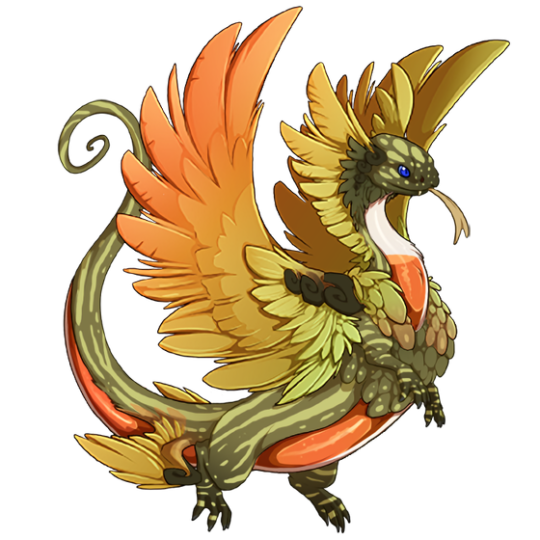
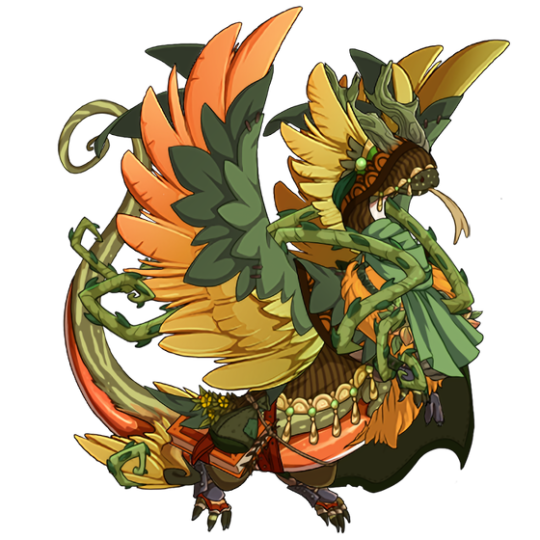
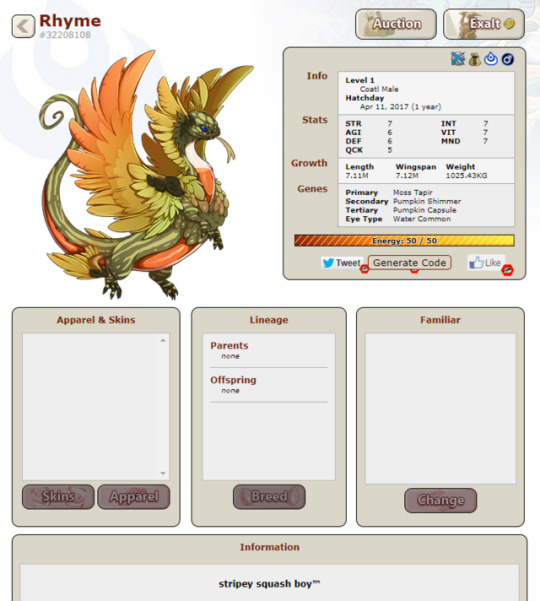
PICK YOURSELF A STRIPEY SQUASH BOY TODAY
i’ve had this kid for a hot minute and never really done anything with him, so!
it’s time for him to go to somebody who will appreciate him like he deserves
He’s an unbred, trip gened, xyy gen 1 (and the only dragon with those colors!)
Currently up in the AH for 4.5k gems, but I’m willing to haggle/take mixed through CR.
link
10 notes
·
View notes
Photo
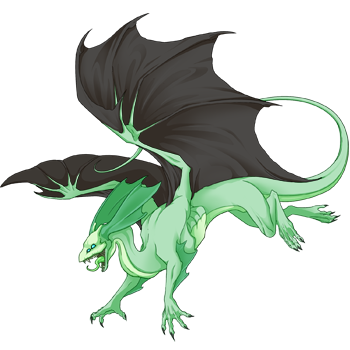
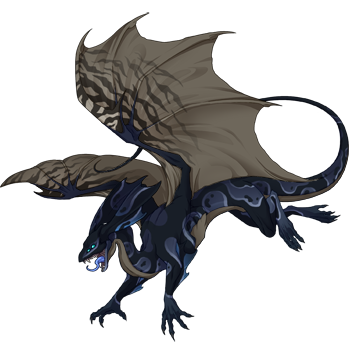
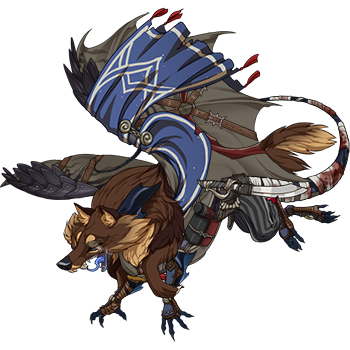
time to talk about my sweet progen sloan i love her quite a lot WITH PICTURES
she ended up seafoam/coal/sunshine to begin with and was basic for like at least two years
when i first joined fr i didnt get it at all... i saw mirrors and decided i liked them the most so i ended up collecting a bunch of mirrors and ONLY mirrors from the AH. at the time i didn’t know you could rename dragons (ive played neopets since i was like 8? so thats probably where that came from) so i had a bunch called random stuff i didn’t love but didnt know how to change. It frustrates me that i don’t remember what i originally called Sloan.
I didn’t really know lore was a thing but proto-sloan was the leader of her group of mirrors along with her ugly at the time boyfriend eliuramur and they had a bunch of really ugly kids cus i didnt understand the breeding system
eventually i branched out into other dragons and realised Genes were a thing but couldn’t figure out what i wanted to gene sloan up as so she stayed basic and was kind of shoved to the back of my lair. i was REALLY into tiger/iri/smoke dragons and i had no way of geneing her like that F - it was around the time skink and spinner came out that i realised i wanted THOSE genes for her! she still didn’t get much attention re: the “story” of my lair tho
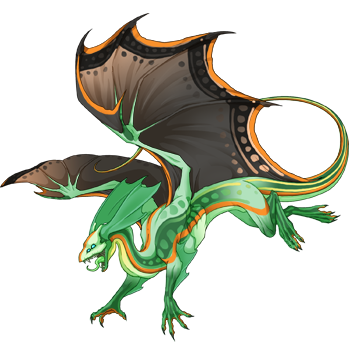
honestly this is still kinda cute
uuh at some point i renamed her Kataile... it was a portmanteau of some french words i forgot but that name sucks anyway! and then we reach the bad times where i started making decent treasure and began using it to scatter sloan
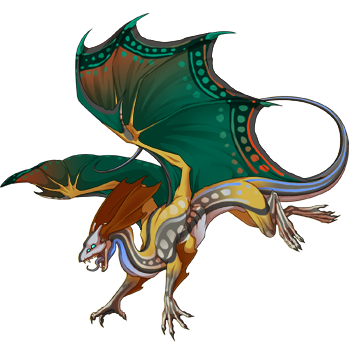
it was a challenging time for everyone here 😔
and then we hit upon the good colours!
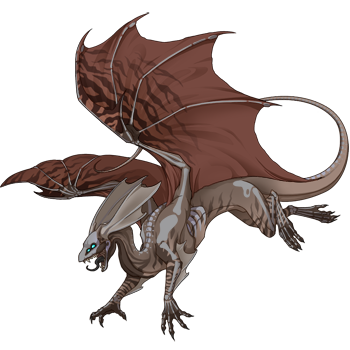
she received her second set of genes here and i started reworking her as the tough, grizzled warrior veteran she is today (sans history) UNFORTUNATELY i still had the urge to keep scattering her which was a few rough months
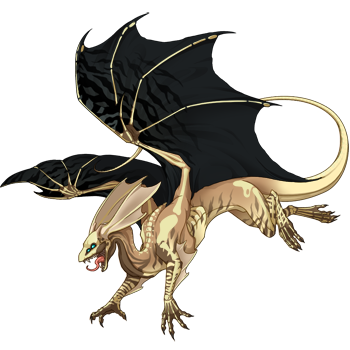
she was stuck as this for a long time which wasnt bad but didnt fit her, as my gf (who is really the only other person who knows any of my lore lmao) said..... Until.......

we hit XYY colours in like january or february of this year! I’m still so stoked about this to be honest. i gave her a couple of new genes too - she looked good with some gem genes but i feel like it makes more sense re:her character to only have treasure and coli genes (also i have no money)
Anyway when i started working on my lore as it is now she is partly founder of Tarneval Town (though she hates to take credit for it) and also the current leader of the Tarnevayle Guard/Warriors Guild which is exactly what it sounds like. She’s sorta rough around the edges and grouchy, and usually doesn’t take part in events around town that much, preferring to stick with her warriors. She never really had any intention of becoming a figurehead of a multi-breed dragon town, having fled from her birth pack The Many-Eyes Clan with a small group of fellow mirrors who eventually perished, leaving her the sole survivor. She was eventually found alone and injured by Volaio, guardian of Tyrnyvell Fort, and nursed back to health. Though still pretty withdrawn, she eventually amasses a small band of fighters seeking to combat evil, and as time progressed, their reputation began to attract non-combatants seeking refuge, and offering their own skills in return. Sloan and Volaio eventually becomes mates, and adopt the tundra/faun Altan.
#i Am mispelling my lair's location name each time on purpose#theres no standardised spelling#i Want to talk abt my lore more but this post is too long thanks to pictures#long post#flight rising dragon share
2 notes
·
View notes
Text
for all the truscum/transmedicalists who believe that transness is a medical condition that has symptoms and diagnoses and an easily definable solution: i hate to be that guy, but im pretty sure you’ve never spoken to a doctor.
i say this because i, an agender person, was lovingly raised by a now-retired pediatrician/physician/genetic therapist who, according to yall, should know that transness is easily defined and treated in a particular fashion. however, i had never actually talked to him about this topic until this morning when i grew morbidly curious about the subject.
when i asked him about whether transness is a condition, he started off by saying that something that is as identity centered as gender and its related dysphoria cannot be considered as a condition, much like other identity indicators like skin color. sure, there was a genetic make up at hand, but that certain markers of that experience could not be treated like a symptom due to its socialized nature. rather, it’s considered a different population with its own issues at hand, dysphoria being one of the bigger issues of the trans community.
that said, he continued, there is nothing a doctor can do besides help the person who is their patient feel more comfortable as themselves. they cannot change or treat their transness, but they can help relieve the issues that their experiences stem from. what those issues may be vary from person to person due to, as i said before, their socialization and personal experiences.
just because someone is trans doesn’t mean that every trans person goes through the same thing. it’s like saying everyone who gets a tumor has one that grows in the exact same shape in the exact same location of the body at the exact same rate. to say that, he emphasized, is the mark of a bad doctor.
as for the genetic/chromosomal inherency of transness (the idea of genetically gendered brains and other medical indicators), he can guarantee that one can’t tell a genetic variation until it causes external physical issues in the baby. this mostly occurs with missing chromosomes or two defective chromosomes. since there’s only usually one x and one y, it’s impossible to say one is “damaged” or causes dysphoria or external deformities, even if it’s xxy or xxx or xyy. as he puts it, it’s a game of luck.
to sum up everything as concisely as i can:
gender is an identity based issue that defines a population and is heavily socially influenced
it is not up to the doctor to force trans people who dont want to transition to transition; they only do what is best for the patient
genetics is a fuck and really doesnt matter gender or sex wise
the fact of the matter is some of you might not believe me or my dad. some might even believe that he’s not even real. however, i can assure you that if you look up William Jay Ramsey, MD and PhD, you will find plenty of his publications on immunotherapy and gene therapy stretching back to 1984. while he’s not the end all be all source of medical knowledge regarding gender, he’s certainly one to be trusted.
tl;dr - trust a doctor. dont be a transmedicalist.
#truscum#transmedicalist#transmedicalism#trans#transgender#trutrans#me#ok to rb#tldr#like if u read#agender#non binary
44 notes
·
View notes
Note
U from arcane is rlly trying to sell a "fully gened" obe g1, when those genes are pymorph and smirch :skull: This mf. AND whoever wins the auction gets 2-3 other dragons that are so unbelievably ugly. Dude, you good? Quit dumping your garbage on other people - Only thing that dragon has going for it is it being (unmatchy) xyy and a scrolled obe.
14 notes
·
View notes
Text
Beginning
JUDGEMENT.
XX, XY, & XYY
DNA’m them genes...
Some people don’t get it.
Out here in NY there’s no law. Someone needs to press the Rock. D’Angelo has a great album Voodoo. Press her with the Rock. Back in High school I used to bust it to the jam.. Berry Jelly.. Yo these girls used to call me Jelly. In High School.. Some wonder and do.. Some look and preach. Some work and never look up. I mean the sky is pretty high up there.. Hopes and dreams are not cheap.. and neither is the Dentist. Some people break the backboards and some wave their hands. Some are players and some are fans.
Fans have RPM’s and Players don't spin.. My right wrench is torque’y though.. That’s Rotations tension for those who don’t know math.
Wu-tang has a track.. Might be GZA liquid swords.. Where the Kung-Fu teacher talks about picking the sword and joining the father in life while the other option is pick the ball with the mother in death. Idk which is better play ball in the fake afterlife or live on the edge of death to get laid. It’s not really a game. Players are the only ones who get to do both. Also PSYTRANCE is da shit.
I’m putting my sword in the ball though.. I don’t trust Dad’s anymore its an Evil word. To Me. #Wethepeople
-Johnny Apple Seed - DA KEAAWT
cute stuff ladies
2 notes
·
View notes
Text
Why Sex Is Not Binary
The New York Times
Oct. 25, 2018
Opinion
Why Sex Is Not Binary
The complexity is more than cultural. It’s biological, too.
By Anne Fausto-Sterling
Dr. Fausto-Sterling is a professor of biology and gender studies.
Two sexes have never been enough to describe human variety. Not in biblical times and not now. Before we knew much about biology, we made social rules to administer sexual diversity. The ancient Jewish rabbinical code known as the Tosefta, for example, sometimes treated people who had male and female parts (such as testes and a vagina) as women — they could not inherit property or serve as priests; at other times, as men — forbidding them to shave or be secluded with women. More brutally, the Romans, seeing people of mixed sex as a bad omen, might kill a person whose body and mind did not conform to a binary sexual classification.
Today, some governments seem to be following the Roman model, if not killing people who do not fit into one of two sex-labeled bins, then at least trying to deny their existence. This month, Prime Minister Viktor Orban of Hungary banned university-level gender studies programs, declaring that “people are born either male or female” and that it is unacceptable “to talk about socially constructed genders, rather than biological sexes.” Now the Trump administration’s Department of Health and Human Services wants to follow suit by legally defining sex as “a person’s status as male or female based on immutable biological traits identifiable by or before birth.”
This is wrong in so many ways, morally as well as scientifically. Others will explain the human damage wrought by such a ruling. I will stick to the biological error.
It has long been known that there is no single biological measure that unassailably places each and every human into one of two categories — male or female. In the 1950s the psychologist John Money and his colleagues studied people born with unusual combinations of sex markers (ovaries and a penis, testes and a vagina, two X chromosomes and a scrotum, and more). Thinking about these people, whom today we would call intersex, Dr. Money developed a multilayered model of sexual development.
He started with chromosomal sex, determined at fertilization when an X- or Y-bearing sperm fuses with an X-bearing egg. At least that’s what usually happens. Less commonly, an egg or sperm may lack a sex chromosome or have an extra one. The resultant embryo has an uncommon chromosomal sex — say, XXY, XYY or XO. So even considering only the first layer of sex, there are more than two categories.
And that’s just the first layer. Eight to 12 weeks after conception, an embryo acquires fetal gonadal sex: Embryos with a Y chromosome develop embryonic testes; those with two X’s form embryonic ovaries. This sets the stage for fetal hormonal sex, when the fetal embryonic testes or ovaries make hormones that further push the embryo’s development in either a male or a female direction (depending on which hormones appear). Fetal hormonal sex orchestrates internal reproductive sex (formation of the uterus, cervix and fallopian tubes in females or the vas deferens, prostate and epididymis in males). During the fourth month, fetal hormones complete their job by shaping external genital sex — penis and scrotum in males, vagina and clitoris in females.
By birth, then, a baby has five layers of sex. But as with chromosomal sex, each subsequent layer does not always become strictly binary. Furthermore, the layers can conflict with one another, with one being binary and another not: An XX baby can be born with a penis, an XY person may have a vagina, and so on. These kinds of inconsistencies throw a monkey wrench into any plan to assign sex as male or female, categorically and in perpetuity, just by looking at a newborn’s private parts.
Adding to the complexity, the layering does not stop at birth. The adults surrounding the newborn identify sex based on how they perceive genital sex (at birth or from an ultrasound image) and this begins the process of gender socialization. Fetal hormones also affect brain development, producing yet another layer called brain sex. One aspect of brain sex becomes evident at puberty when, usually, certain brain cells stimulate adult male or adult female levels and patterns of hormones that cause adult sexual maturation.
Dr. Money called these layers pubertal hormonal sex and pubertal morphological sex. But these, too, may vary widely beyond a two-category classification. This fact is the source of continuing disputes about how to decide who can legitimately compete in all-female international sports events.
There has been a lot of new scientific research on this topic since the 1950s. But those looking to biology for an easy-to-administer definition of sex and gender can derive little comfort from the most important of these findings. For example, we now know that rather than developing under the direction of a single gene, the fetal embryonic testes or ovaries develop under the direction of opposing gene networks, one of which represses male development while stimulating female differentiation and the other of which does the opposite. What matters, then, is not the presence or absence of a particular gene but the balance of power among gene networks acting together or in a particular sequence. This undermines the possibility of using a simple genetic test to determine “true” sex.
The policy change proposed by the Department of Health and Human Services marches backward in time. It flies in the face of scientific consensus about sex and gender, and it imperils the freedom of people to live their lives in a way that fits their sex and gender as these develop throughout each individual life cycle.
Anne Fausto-Sterling is an emeritus professor of biology and gender studies at Brown University.
https://www.nytimes.com/2018/10/25/opinion/sex-biology-binary.html?smid=fb-nytimes&smtyp=cur&fbclid=IwAR0Ss4LF8tyOZy9A32dWiJDOejy72qrpM3HBrpRE9QCXWFE8_ibYR_hNcCo
2 notes
·
View notes
Photo
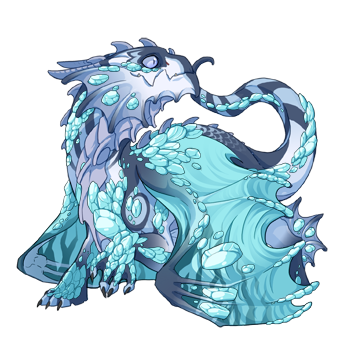

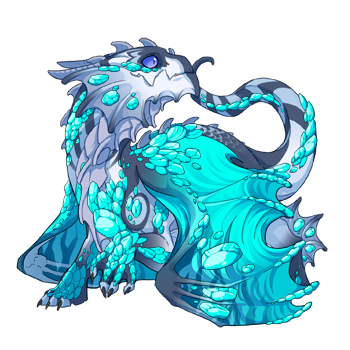

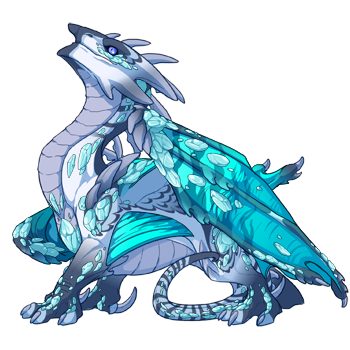
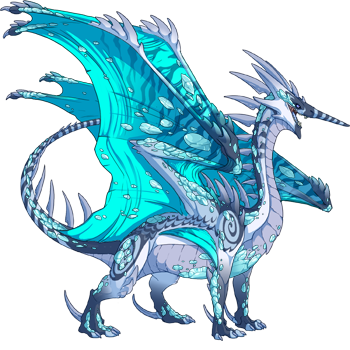


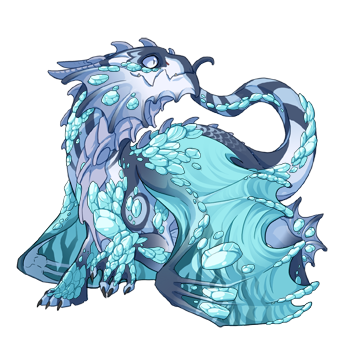
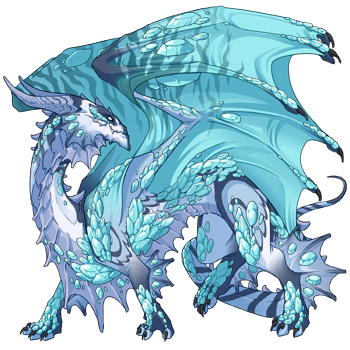
... I can’t decide how to regene Astra. That and... the one thing I really like on her for a primary and secondary are both gem genes and I can’t afford them. lol
So you get these guys until I have those funds.
Only the last one is common eyed! All are Ice/x Cherub/Safari/Gembond
42358327 - XYY Robin - Rare - 30g
42358328 - XYY Cyan - Unusual - 25g
42358329 - XYZ Cyan/Robin - Unusual - 25g
42358330 - XYZ Cyan/Robin - Uncommon - 20g
42358331 - XYY Robin - 20g
All on the AH. Can take treasure at 1000:1.
Lair link!
#FR Dragon Sales#xyy#xyz#guardian#ridgeback#ice#robin#cyan#cherub#safari#gembond#ice rare#ice unusual#ice uncommon
6 notes
·
View notes